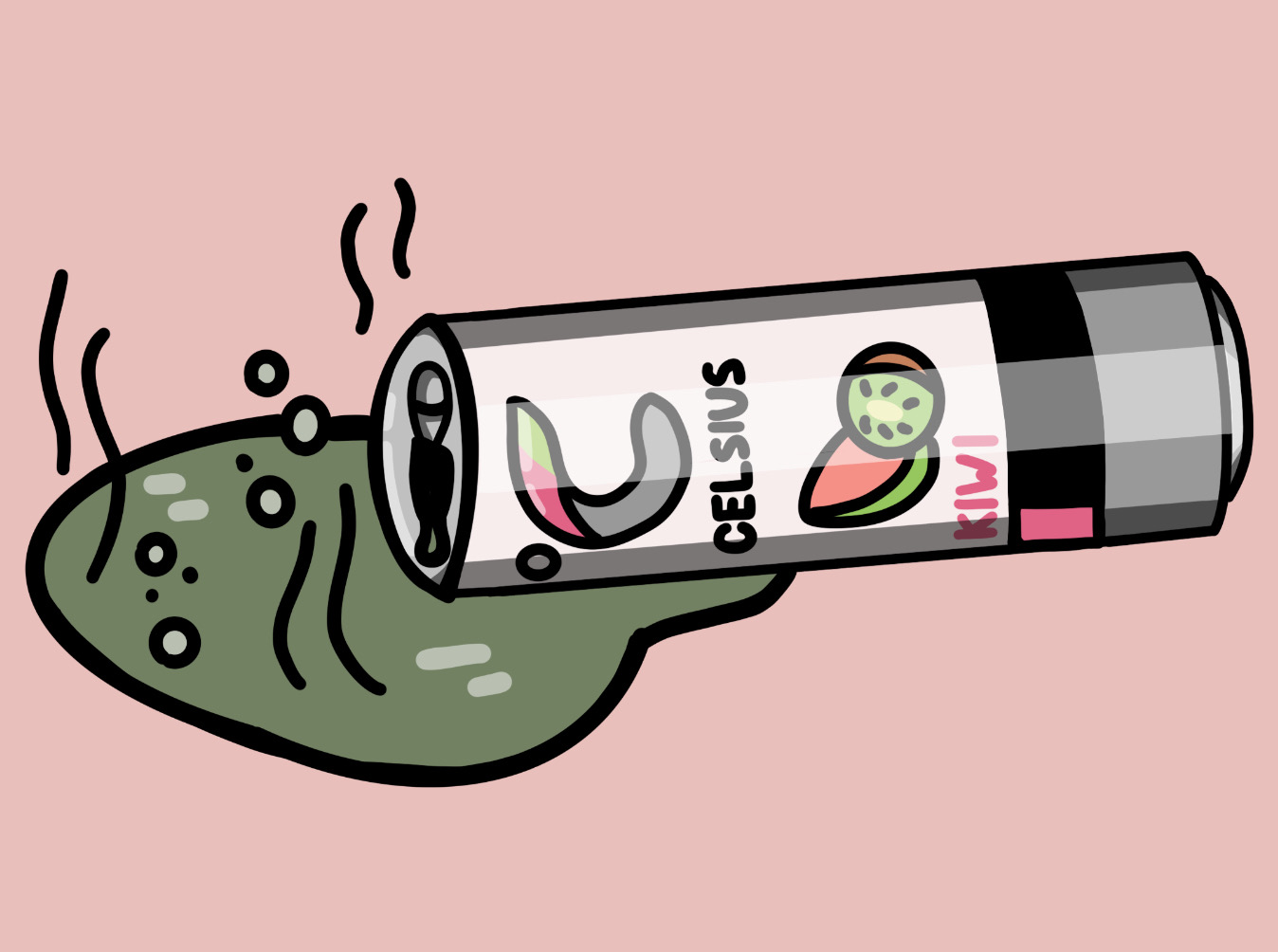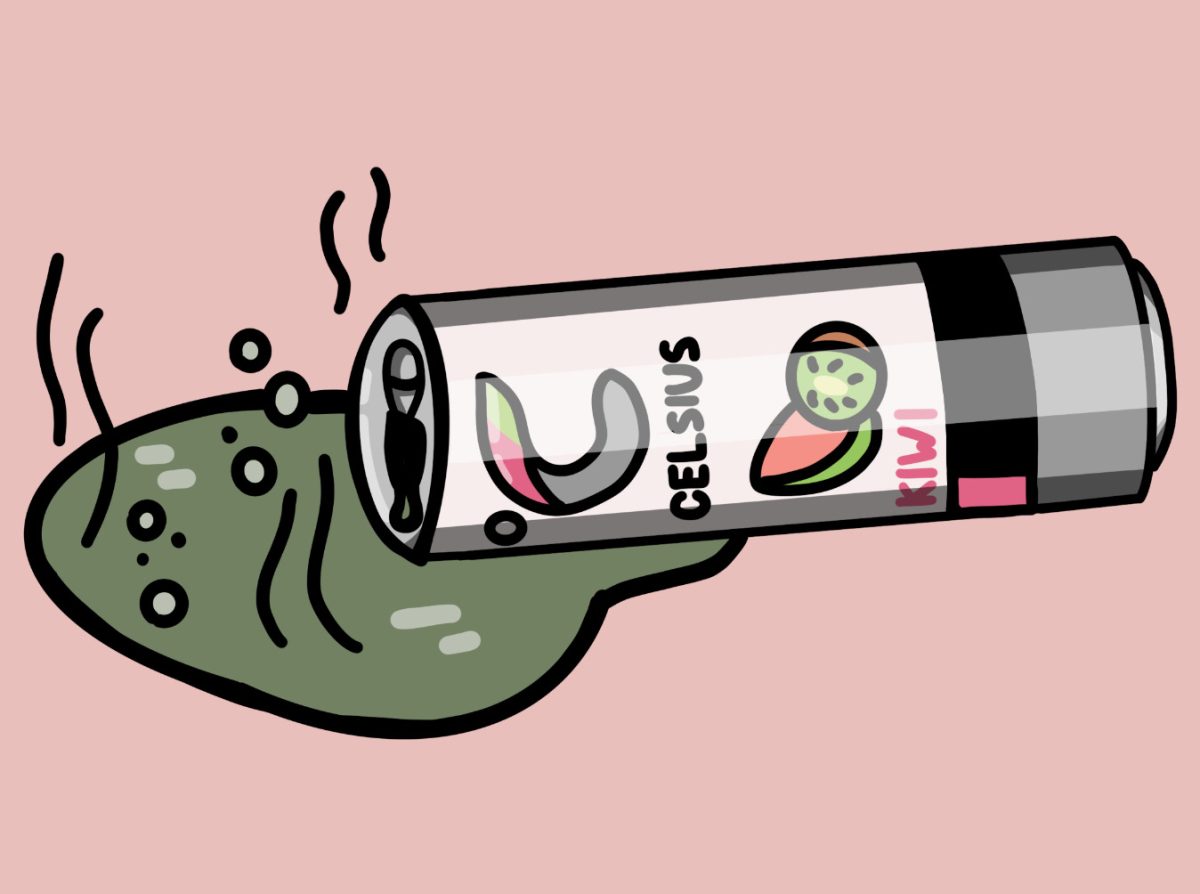
Buzzed and Burned: East’s Energy Drink Epidemic
The concept of the energy of the drink can largely be traced back to the post-World War II era. Before the war, many soft drinks contained hard substances such as methamphetamines and cocaine. As research revealed the health risks associated with these harder drugs, the soft drink industry took a turn toward increased usage of caffeine, a milder stimulant. To appeal to a greater audience, beverage companies dubbed new formulas as “energy drinks” and advertised the high vitamin and caffeine contents in each can as healthy ways to remain stimulated throughout the day. As these products spread across the globe, new and currently recognizable energy drinks such as Redbull and Monster Energy were established. These brands partnered with celebrities and advertised themselves at sporting events, causing consumers to become less skeptical of the nutritional value of each can.
However, in recent years, renewed concerns have emerged over energy drinks and caffeine consumption. Particularly grave health concerns were raised after PaneraBread’s heavily caffeinated “Charged Lemonade” resulted in the deaths of two Americans. Though most energy drink consumers are not likely to face this problem, numerous medical studies have revealed health issues associated with energy consumption.
The Centers for Disease Control and Prevention (CDC) has stated that several dangers of energy drink consumption include “dehydration, heart complications, anxiety [and] insomnia.”
The marketing of energy drinks toward teenagers and young adults poses even greater concerns. The American Academy of Pediatrics has stated that caffeine-based beverages have no place in the diet of children and adolescents. Despite this, popular social media influencers frequently sponsor energy drinks (most notably Bang and PRIME), ensuring that the beverages gain popularity amongst younger audiences. Most energy drink companies place warning labels that direct those under 18 not to consume their products. However, these merely act as guidelines and do not restrict minors from purchasing energy drinks. Thus, minors have continually represented one of the largest consumer bases of energy drinks.
The addictive nature of caffeine also poses particular concern considering the high rate of teenagers drinking energy drinks. According to the Mayo Clinic (a leading medical nonprofit), daily caffeine consumption can cause people to “develop physical and psychological dependence… and experience withdrawal symptoms if intake is abruptly stopped.” If individuals continue to form habits of drinking energy drinks during their teenage years, they may find it even harder to give up their reliance later on in life.
According to the American Academy of Pediatrics, adolescents ages 12 to 18 should cap their daily caffeine intake at 100 mg. However, many trendy energy drinks contain over 100 milligrams of caffeine like Celsius (200 milligrams). Teenagers can be more susceptible to caffeine’s undesirable effects,
such as anxiety, diarrhea, and dehydration.
“High school students should use [energy drinks] in moderation. Too much of anything is not good for your body,” said Pushti Shah (‘25).
Despite the stigma around energy drinks, students still often rely on them to assist them with getting through the day or even the night.
“When it’s 3 a.m. and your eyelids are drooping but you have to finish your paper, there’s no other option to keep you up and going. I understand it’s not the best option, but it feels like there’s no other option
because of the amount of work I have,” said Aaralyn Camp (‘25).
But even with the suggested doses, caffeine usage in the afternoon and evening can ruin one’s sleep quality and sleep quantity. Moreso, adolescents who consume caffeinated beverages often practice other unhealthy sleep habits such as sleep onset latency, difficulty staying asleep, and shorter sleep duration.
“Energy drinks are detrimental because they stop you from stopping the root issue: your sleep schedule. Once you have [an energy drink], you won’t stop,” said Usra Aslam (‘24).
Energy drink usage only deters a person’s time management skills. Instead of finding ways to gain more sleep, relying on these beverages only encourages less sleep.
The lack of sleep exists as a universal issue at East, so it’s no surprise that energy drinks have become the buzz they are now.
“It’s like a badge of honor if you get any sleep because you were grinding all night doing work,” said Aslam.
The spike in energy drink usage can also stem from the competitive environment at East — the urge to excel will be prioritized over a student’s health.
“You will prioritize studying over mental stability and sleep schedule,” said Aslam.
Even in strenuous times, a student’s health must always come first. Administration and staff should be understanding of this. If we are fostering a climate where students have to rely on these harmful substances to succeed, then are we really creating a welcoming learning environment?
There are numerous ways to conserve one’s energy from retaining a balanced diet, increasing exercise, and maintaining sleep. While these ways may be repetitious to some degree, these solutions continue to exist, as they truly are the best ways to keep an individual going throughout the day.
Ditch the energy cans, and adopt better energy plans.
An energy drink can kill, but sleep cannot.




